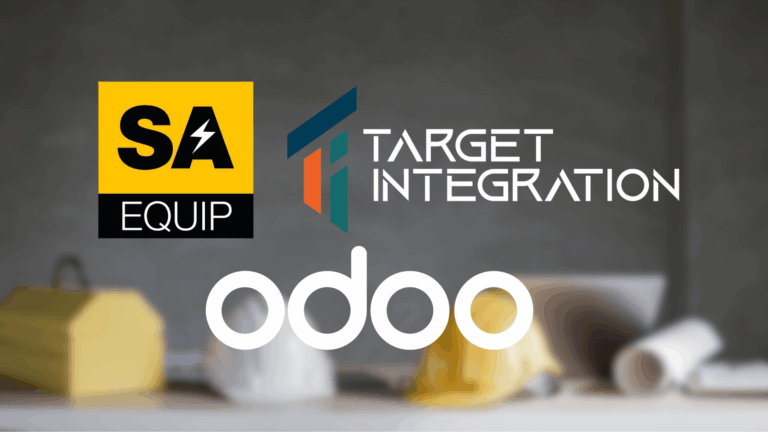From Fragmented Tools to Unified Control
Managing IT infrastructure across a growing group of companies presents a unique challenge. As systems multiply and responsibilities spread across different teams, processes often become fragmented.
We experienced this first-hand: essential tasks such as monitoring vulnerabilities, managing server access, tracking backups, and ensuring disaster recovery were spread across several platforms and handled inconsistently.
Rather than relying on a patchwork of tools and manual processes, we set out to design and build a single platform that could unify these functions. The result was our custom-built operations system, developed in-house and tailored to the needs of our business.
Target Integration Group:
SERVICES
Vulnerability Monitoring, Security Policy Enforcement, WordPress Site Tracking, Backup Management, DNS Centralisation, Access Control Automation, Email Delivery Reporting, Disaster Recovery Planning, Systems Integration
PRODUCTS
Custom Operations Platform (Nexus PHP), Cloud Backup Integration, Centralised Server & DNS Management Tools
INDUSTRY
Technology, IT Services, Digital Transformation
The Problem of Disparate Systems
As the Target Intergration Group grew, we found ourselves managing an increasing number of servers, applications, and websites. Each came with its own set of dependencies, monitoring requirements, and access controls. The challenges included:

WordPress Plugin Tracking
With multiple WordPress sites in use, we lacked central visibility of which plugins and themes were installed where, making it harder to respond when vulnerabilities were announced.
DNS Records
Our DNS was spread across multiple providers and workplaces, creating a complex and fragmented management process.
Access Control
Adding or removing staff from multiple servers was a time-consuming and error-prone task. Public key authentication is secure, but manually updating every server when someone left was inefficient and risky.
Backup Monitoring
While backups were in place, tracking their status across different servers and cloud providers was difficult. Ensuring backups were running correctly, and identifying failures, lacked a unified process.
Email Delivery Reporting
Analysing SMTP logs to resolve email delivery issues was cumbersome and required knowledge of complex command-line filters.
Disaster Recovery
Backups were stored, but we lacked a structured way to regularly test whether we could restore systems in the event of failure.
The result was a series of siloed systems that added risk, wasted time, and slowed down our ability to react.
Building a Central Hub for Operations
To address these issues, we built a custom operations platform using Nexus PHP. This application now serves as the central point of management for our infrastructure, bringing together multiple processes into a single, unified interface.
Vulnerability Scanning
We implemented automated scanning of projects for known vulnerabilities in software packages. This means that as soon as a new vulnerability is published, we can quickly see whether we are affected and act immediately. It has significantly reduced the time between discovery and remediation, strengthening our security posture.
Content Security Policy (CSP) Reporting
We added support for Content Security Policy reporting. This allows us to enforce strict rules about what functionality our websites can use, while collecting reports of any attempted violations. It provides another layer of protection against malicious code, browser plugin injections, or unexpected scripts. Importantly, CSPs can first be tested in “report-only” mode, ensuring that legitimate functions are not disrupted before policies are enforced.
WordPress Site and Plugin Tracking
The platform collects data on WordPress installations across our servers, giving us full visibility of which themes and plugins are being used. While this does not automatically flag vulnerabilities, it makes it far easier to react when security advisories are released, as we can quickly identify where a specific plugin is deployed.
Backup Management
By integrating with our cloud storage provider, the platform tracks backup storage, usage, and history. We can now confirm at a glance that backups are running correctly, check the oldest and newest backup dates, and quickly identify any sites or servers that are not being backed up properly.
DNS Centralisation
We built a DNS management module that consolidates record lookups across all providers. This enables our team to see exactly which DNS records are hosted where, without needing to log into multiple platforms.
Email Delivery Reports
SMTP logs are now fed directly into the platform, where they are presented through a clear, filterable interface. Instead of sifting through raw logs, we can generate reports and charts that highlight delivery trends, rejected messages, or issues with mailing lists. This has already helped us identify and resolve problems with outdated mailing lists that were damaging deliverability.
The Impact Across Our Group
The introduction of our operations platform has transformed the way we manage infrastructure across the group. The key benefits include:
- Streamlined SharePoint Sites: Consolidated multiple SharePoint instances into a single, unified interface for better collaboration.
- Project & Communication Centralisation: Integrated real-time updates, document sharing, and internal news on one platform.
- Easy-to-Access Global Network: Made internal resources accessible to all locations, ensuring ease of use and operational efficiency.
- Scalability & Flexibility: Built to scale as Oxford Instruments continues to grow and acquire new companies globally.

How a Unified Platform Changed Our Operations
What began as a small tool to monitor vulnerabilities has grown into a comprehensive operations platform. By centralising and automating key processes, we have resolved long-standing issues caused by managing disparate systems across multiple companies.
The result is not just a more efficient IT function, but also a more secure, resilient, and scalable foundation for the future of the organisation.



